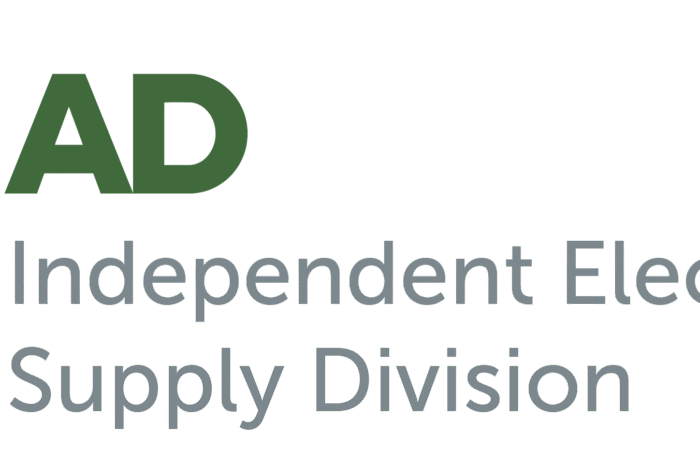WESCO, Rexel and AD Q2 2019 Performance Update

WESCO, Rexel and AD recently shared their Q2 performance and, while they all reported growth, the market appears uneven with Rexel reporting strong performance in the US and WESCO and AD sharing low single digit growth. WESCO and AD highlight a slowing in the market, especially in the industrial segment. And the slowing industrial market is also apparent with manufacturer reports we’ve read and will be reporting on shortly.
The WESCO and AD performance appear to reaffirm insights from the Grainger Q2 earnings report where Grainger reported slowing growth, and Grainger can be a bellwether for the industrial market.
WESCO (press release, earnings call and slides)
- Record sales, but up only 2% overall, 1.9%
organically.
- US overall up 1.3%, Canada up 1.1%
- 1.3% growth is from SLS acquisition
- Industrial up 1% overall, 2% in US and 6% in
Canada based upon local currency (so before currency exchange impact)
- Emphasis that “labor constraints persist” and this is a hinderance on growth (the challenge with this comment is that the labor issue, given the construction / industrial employment outlook, is not going to change short-term … and it doesn’t appear other competitors use this as part of their economic issues…it’s more just “the state of what it is.”)
- Global (national) account bidding pipeline is strong (but no sense if there is an improving close ratio or what an aggregate agreement utilization rate may be.)
- Construction market up 3% BUT -1% in US, up 9%
in Canada (in Canadian dollars!)
- Sales to commercially-oriented contractors up mid-single digits, but off-set by industrial contractors being down
- Backlog down 7% vs prior year, but 2nd highest in company history.
- Mentioned that contractors challenged by tariffs (which went into effect at the end of the quarter, albeit there was uncertainty earlier. The bigger question is, is this at the contractor level or at the project / end-user level? Was funding already approved and the project started or is this renovation work that will be put on hold? Or business that WESCO perhaps lost / will lose to others?)
- Again, the labor issue was mentioned, but all distributors and contractors are facing the same (unless WESCO is more aligned with contractors who have these issues? Perhaps union contractors? Perhaps more of an issue for large contractors?)
- Utility
- Up 3% … 6% in US, down 28% in Canada local currency due to losing a customer in Q4 2018.
- Expect continued growth in this sector due to new contract.
- 7 consecutive years of growth in this sector
- Commercial, Industrial, Government (CIG)
- Up 1% overall, 1% in US and 10% in Canada local currency.
- Growth in datacenter and cloud technology environments
- Growth in the lighting and datacom product categories.
- Gross margin of only 19%
- Strength in Canada, Utility and Datacom
- Operating margins grew by 30% due to “effective cost management” and strong operating profit (and we hear lots of Pittsburgh focus on manufacturer rebates!)
- Revised annual growth downward to 1-4% growth; operating margin revised down to 4.2-4.5%
- Interesting that they focus on providing customers with “complete solutions for their MRO, OEM and capital project needs”. Given Grainger’s broader product offering, Grainger plays more in a “complete” solution whereas WESCO can play in an “electrical / electronic and somewhat safety” MRO solution. Depends on what customer defines as their need.
- Repurchased $150M of common stock (helps increase earnings per share). Expect to purchase $275M in stock through end of year.
- 51% of sales typically occur in second half of the year (which means, if slower, not promising for significant growth, especially if industrial continues to slow. This is typical for distributors … 51-56% from our experience.).
- Pricing added favorable impact of about 2% (so, tariffs had minimal impact on sales so far. If anything, more uncertainty)
- Industrial contractor business slow
- Utility has lower gross margin than 19%
- SLS has some gross margin benefits (but it’s only $100M in sales, hence nominal dollars)
- Operating profit is currently 4.6%
- Investing to digitize business
- Seeking to deploy free cash flow through “large transformational” acquisitions to consolidate within electrical distribution business.
Outlook
- Q3 expectations is growth of 3-5% (would be acceleration of current pattern, or projecting tariff benefits or backlog to be realized in Q3)
Additionally, in June WESCO hosted over 800 people on their Contractor Incentive Program on an Alaskan Cruise. Currently they are running their 2019 contractor program and contractors are in pursuit of a trip to Hawaii or various merchandise awards depending upon their purchasing performance. If the company is only down 1% in their contractor business, the question then becomes, “would they be down much more without the program” or, “is the program having any impact in generating discretionary business?” Perhaps it becomes a retention initiative? (albeit with a significant expense)
Analyst questions
- Industrial short-cycle (MRO) slowing, projects being pushed out and reluctance to “move along”. Tied to slowing global economic growth. Customer CFOs being “cautious”.
- WESCO July had some uptick … mid-single growth
- Oil & gas down 1% in Q2, low growth in Canada and US
- WESCO discussed “growth” in Q3 and Q4 will be better because comps versus prior year are easier, especially in the utility segment (so, utility growth could mask contractor and industrial performance.)
- Datacom and security up high single digit
- “Tariff” mentioned as reason for price increases 2/3rds of the time. Can’t pass along all of it timely due to global accounts, some projects, some utility agreements. Always try to “add a bump.”
- SLS sales in Q2 was $28M
- Expecting end-market growth rate to be
materially lower and hence WESCO taking share
- Wild card will be “how end-markets develop especially around industrial and capital expenditure expectations.”
- OEM weakness, due to global market (i.e. Carlton Bates, RS Electronics businesses)
For a company that espouses that it will exceed industry growth annually by 1-2% and is taking / will take share, it appears that it still is challenged in diversifying its business based upon customer size.
Rexel
From Rexel’s quarterly call, with a US / North American focus:
- Digital sales, globally, represents 17.2% of sales with Europe over 25%
- Plan to role out “Platt tools” across the US
- Adding track-and-trace and email to EDI and other tools in Europe
- Enhance analytical tools
- Feels that operating leverage is achieved when can get to 30-35% of sales being digitally generated.
- Same day 1st half growth of 2.7%
globally
- North America represents 39% of sales
- Same day sales up 6.8%
- US is 79% of North America
- Sales up 7%
- Commercial project up 9%
- Residential up 10%
- Industrial “slowed down”
- Double digit growth in California, Mountain Plains, Southeast
- US is 79% of North America
- US EBITA is 4.1%
- Added 54 branches since 2017, which added 1%
growth in Q2. Renovated maybe 2x more
than this (about 100 branches renovated)
- Branches of the future may have less square
footage due to them being supported by digital sales and regionalized shipping.
- Looking at productivity measures
- $ / square foot
- $ / sales rep
- $ / employee
- Looking at productivity measures
- Branches of the future may have less square
footage due to them being supported by digital sales and regionalized shipping.
- US focus is now digital
- Same day sales up 6.8%
- North America represents 39% of sales
- Expect marketplace to remain “volatile”, especially internationally with global slowdowns and Brexit concerns.
- Don’t expect to “allocate further resources for branch openings, inventory buildup or adding to the salesforce.”
- Expect to improve operating leverage through
- Productivity measures to offset cost inflation in the US
- Focus on the Proximity business (branch) in the mix
- Continued efforts to enhance margins
Analyst questions
- Rexel feels that it’s Q2 US performance is a trend and based upon strong business fundamentals.
- Saw some project ordering move into Q2 due to tariffs.
- Expect less project business (due to tariff delayed projects) and more Proximity business, which will help improve margins.
- Rexel reaffirmed its expectation that US turnaround investment is complete with minimal needs for the next two years in the core elements of the business and that the next level of investment will be technology and digital initiatives to “become a leader.”
- Mentioned that they expect to leverage growth into better rebates from suppliers.
- Focused on organic growth.
- Want to grow web sales inclusive pf punch-out, email to EDI or EDI. The key is converting orders to digital to increase operational leverage.
- Price inflation, excluding wire / cable, for North America was 3% increase.
- Regarding tariffs, all quotations are subject to price adjustments due to tariffs (had issues in Q1 due to November / December tariff increases and their process at that time.)
- Not focused / interested in acquisitions of “same business”. Feel can grow organically and that multiples are “sometimes ridiculous and outrageously high.” Not interested in acquisition for “market share gain.”
Appears to be, in general, on a much better path. As can be seen by the US regions that were mentioned, those that weren’t are probably still “challenges”, but overall, progress. Additionally, highlights that the commercial contractor market and probably the small to mid-sized contractor segment, has had growth.
AD
While AD isn’t a publicly held company, they do share, at a very high level, their performance. While they had a press release with impressive top line numbers, those are based upon the entire organization and are inflated due to an acquisition / merger.
In reading deeper, their electrical group, in aggregate, was up 2% over the past 6 months (they didn’t report performance for the past quarter for comparison vs national chains, hence potentially they are on par with the national chains. Unfortunately, they do not segment this information by country (as the group is in the US, Canada and Mexico.)
Second Half?
Based upon feedback, the second half may be best described as “murky”. There are questions about:
- How much of Q3 was pulled into August, especially for lighting manufacturers from a distributor purchasing viewpoint as well as contractors committing on projects … hence a “pull-forward” effect?
- What will tariffs do to longer-term construction projects?
- Will tariffs impact industrial end-user production enough to impact their investment decisions?
- The global slowdown? It may not impact “your” business, but can definitely impact OEMs, if you sell to them?
- How much will market performance be clouded by inflated pricing caused by tariffs? (and yes, distributors should be looking at other metrics to determine if they are taking share / growing or is performance masked by price inflation)
How was your first half? What are you seeing this summer and what is your second half crystal ball saying?

























